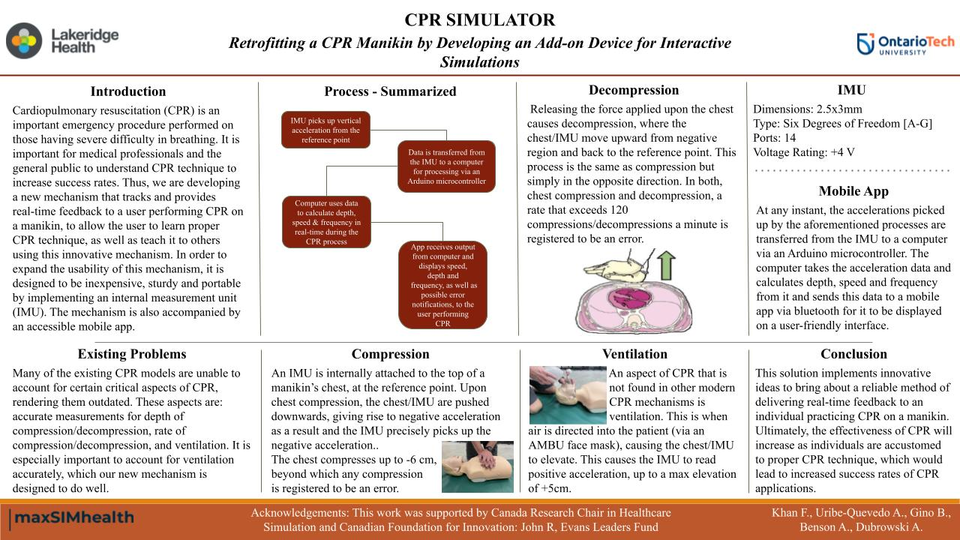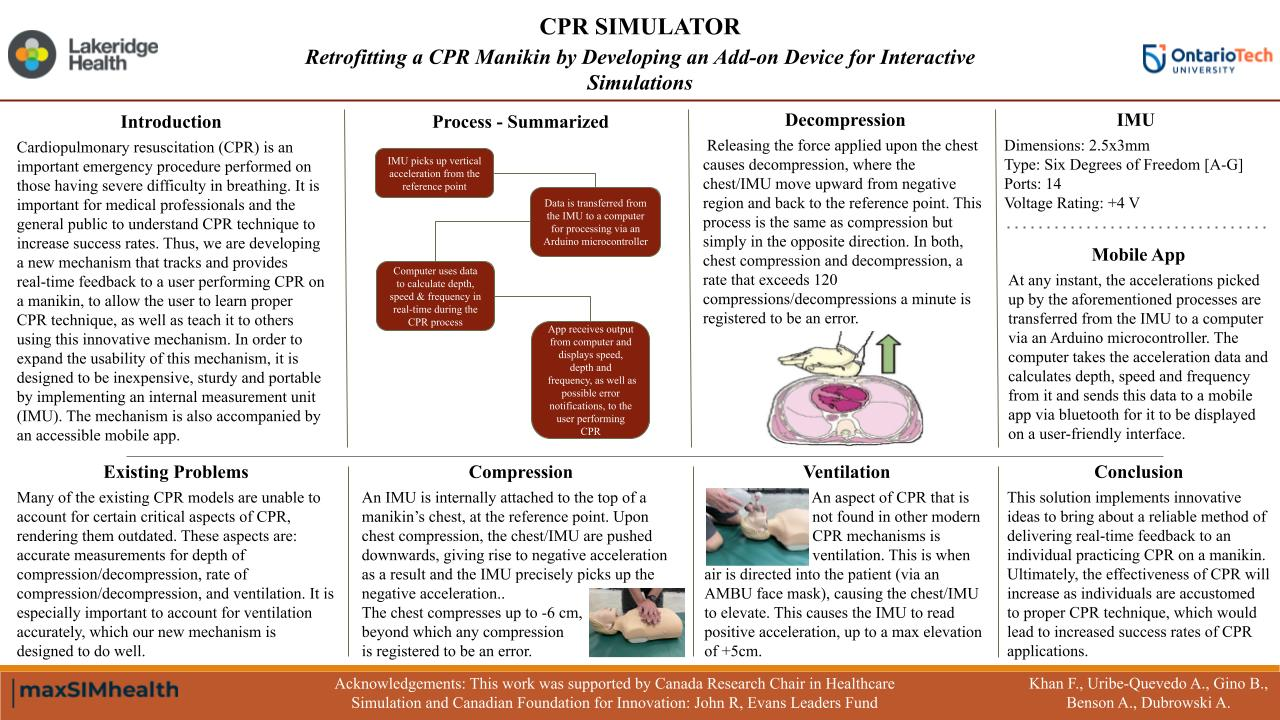Abstract
Context:
Cardiopulmonary resuscitation (CPR) is an emergency procedure involving compressions/decompressions and ventilation being performed upon a person experiencing severe difficulty in breathing or no breathing at all, in order to restore blood circulation and breathing in the patient. It is important for medical professionals and the general public alike to understand critical aspects of CPR to ensure that they can perform the procedure as efficiently as possible when needed. Currently, CPR has a success rate of 15% so the development of CPR mechanisms to enhance success rates is important.
Problem:
This project aims to develop a solution that allows a user to understand and demonstrate CPR properly. Audiovisual feedback with respect to depth/speed/frequency of chest compression/decompression/elevation will be presented to the user in real-time, to indicate proper execution. Existing mechanisms for CPR simulation do exist, though they are not precise with their depth/speed measurements, and they are also unable to account for ventilation, which is an important aspect of CPR that must be considered.
Solution:
A 6 degree-of-freedom inertial measurement unit (IMU) is internally attached to the top of a manikin’s chest, at the center and slightly below the nipple line. The IMU reads its own vertical acceleration from the reference point in its state of rest, so the IMU measures the negative acceleration it produces upon compression/decompression. By capturing the accelerometer data, displacement can be calculated by integrating the signals and adjusting the error to obtain reliable measurements.
This solution also accounts for measurements during ventilation, where air enters the manikin to make the chest rise. The method of ventilation in this solution will be via an AMBU-bag with a full-face mask. The acceleration data is continuously fed to a computer via an Arduino microcontroller and Arduino software calculates depth/speed/frequency of chest compression/decompression/elevation. This information is then sent to mobile devices via Bluetooth which display the data onto their interfaces, providing a reliable way of knowing if the user is properly performing CPR. The app also accounts for excess ventilation/compression, which is when the chest elevates beyond +5cm during ventilation or compresses beyond -6cm during compression. When these scenarios occur, audiovisual feedback is provided to the user to alert them of their mistake(s) to help them improve and learn.
Potential Impact:
The implementation of a 2.5mmx3mm inertial measurement unit aims to generate a reliable mechanism as there are no moving parts that can be damaged when moved from one location to another, and it also means that it is a relatively inexpensive solution with low maintenance. The accessible display of the app will allow anyone to understand and make use of it, ranging from medical professionals in training, to high school students learning about health and safety.
This solution aims to give rise to better CPR techniques being practiced which can in turn lead to increased success rates of CPR applications. Many individuals performing CPR do not know the proper technique to follow, and those that do, may forget technique due to lack of practice. This accessible solution aims to increase knowledge of CPR amongst laymen and to maintain knowledge amongst medical professionals.





